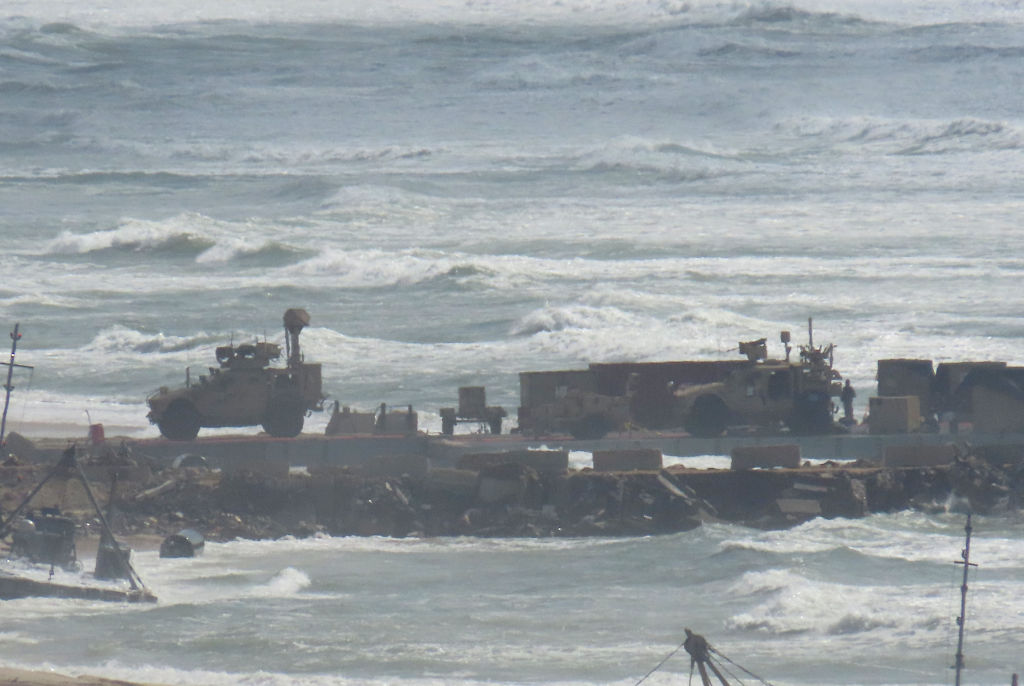The U.S. military announced on Wednesday that its mission to install and operate a temporary, floating pier off the coast of Gaza was complete, formally ending an extraordinary but troubled effort to bring humanitarian aid to Palestinians.
The pier, announced by President Joe Biden during a televised address to Congress in March, was a massive endeavor that took about 1,000 U.S. forces to execute. Aid began flowing via the pier to Gaza in May, an operation aimed at helping avert famine after months of war between Israel and Hamas.
But bad weather and distribution challenges inside Gaza limited the effectiveness of what the U.S. military says was its biggest aid delivery effort ever in the Middle East. The pier was only operational for about 20 days.
“The maritime surge mission involving the pier is complete. So there’s no more need to use the pier,” Navy Vice Admiral Brad Cooper, the deputy commander of U.S. Central Command, told a news briefing.
Cooper said efforts to distribute aid to Gaza arriving by sea would now shift to the established port of Ashdod in Israel. At least 5 million pounds of aid, which are either in Cyprus or on ships, will be going to Ashdod in the coming days, he said.
“Our assessment is that the temporary pier has achieved its intended effect to surge a very high volume of aid into Gaza and ensure that aid reaches the civilians in Gaza in a quick manner,” Cooper said, adding that nearly 20 million pounds of aid was delivered to Gaza.
The pier became a sore point in Congress, where Republicans branded it a political stunt by Biden, who was under pressure from fellow Democrats to do more to aid Palestinians after months of staunchly supporting Israel’s punishing war on Hamas.
“This chapter might be over in President Biden’s mind, but the national embarrassment that this project has caused is not. The only miracle is that this doomed-from-the-start operation did not cost any American lives,” Senator Roger Wicker, the top Republican on the Senate Armed Services Committee, said.
Cooper said he expected the pier, which was authorized to be used until the end of July, to cost less than the $230 million the Pentagon had expected it to cost.
Cooper said the United States had so far delivered more than 1 million pounds of aid through Ashdod and he was confident more could be delivered through that port.
“We look forward to millions more pounds of aid going through that pathway,” he said.
While the pier brought in sorely needed aid to a marshalling area on Gaza’s shore, the 1,200-foot-long (370-metre-long) floating pier had to be removed multiple times because of bad weather.
The pier has not been used since June, when it was moved to Ashdod port because of rough seas. It was unclear if the U.S. military had started dismantling the pier at Ashdod before its expected return to United States.
The U.N. World Food Programme paused operations at the pier in June because of security concerns, causing aid to pile up on the Gaza shore.
The United Nations has long said maritime deliveries were no substitute for land access. It said land routes needed to remain the focus of aid operations in the enclave, where a global hunger monitor last month said there is a high risk of famine.
Aid officials say about 600 trucks of humanitarian and commercial supplies are needed in Gaza daily to meet the needs of the population.
(Reuters)










